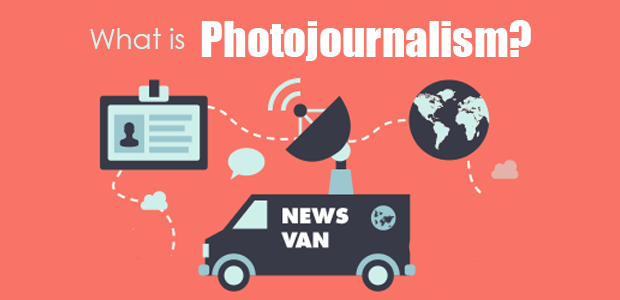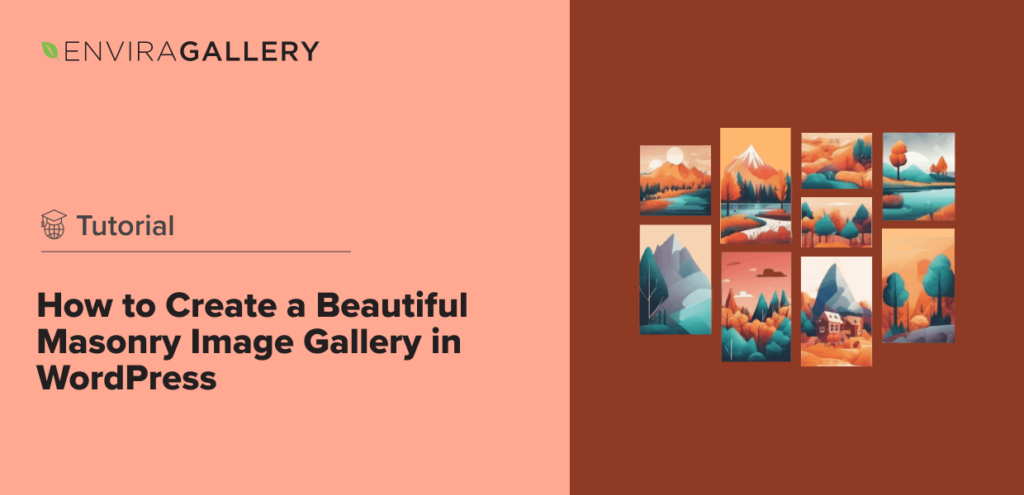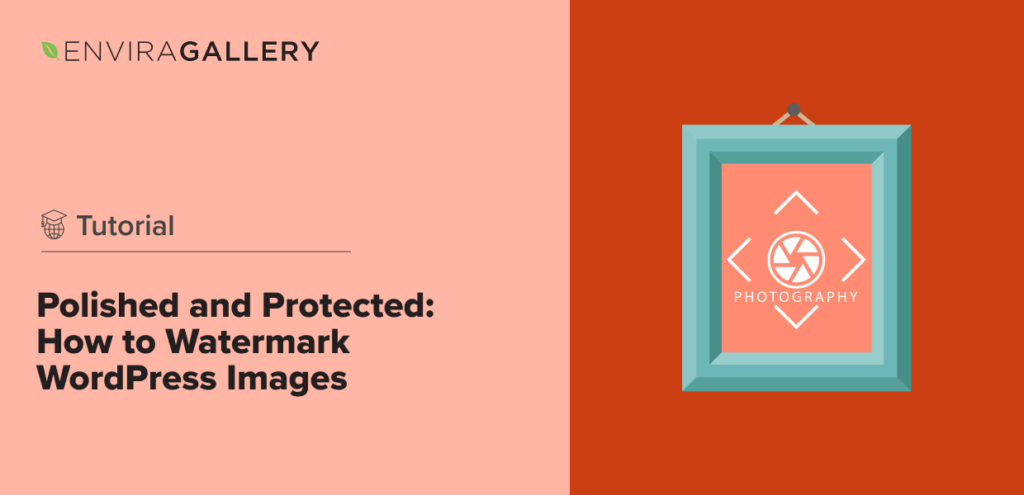You’ve undoubtedly heard the phrase, “a picture is worth a thousand words,” and it’s one that photojournalists live by. But what is photojournalism? What does it look like? Where can you find it? How does it differ from other types of journalism, and how can you become a photojournalist?
In this article, we’ll talk about
- What is Photojournalism?
- Examples of Great Photojournalism
- Concepts in Photojournalism
- Best Photojournalism Tutorials
At the end of this article, you’ll have a solid understanding of the field of journalism. In fact, you may just want to start a photojournalism career yourself!
What is Photojournalism?
Photojournalism is the act of telling stories, or reporting on people and events, visually through photographs. Like other forms of journalism, it works to convey a message about the world. But, instead of using words, photojournalists use photos to capture that message.
History of Photojournalism
Historically, photojournalism was important because it reflected the everyday experiences of people around the country. Before the age of television, movies, and talk radio, photos were the primary way that people learned what was going on around them. Of course, newspapers existed, but they weren’t accessible to everyone.
Though illiteracy still persists today, it was much more common when photojournalism first became popular. Photojournalism attracted people who couldn’t read, and it allowed them to be a part of the news cycle.
And, to many people, it was much more engaging. Think for yourself: would you rather look at a photograph, or read a dry newspaper article? Most people at that time and now would prefer looking at images.
Photojournalism had the ability to transport people to places they had never been in a way that print news didn’t. It’s one thing to read about an event in a faraway place. But, it’s another thing altogether to see that place in a photograph.
We have the United States Government to thank for the creation and rise in popularity of photojournalism. The field first arose as early as 1853 and was used to cover the Civil War in the publication, Harper’s Weekly.
But, it grew even more popular during the Great Depression when the U.S. Government paid photographers to travel the country — and sometimes the world — to bring news back home.
Of course, the government’s interests frequently caused bias in the photojournalism coverage. Looking back on photojournalism stories of the past, we have to take the government’s role into consideration. It would have been difficult at the time for photographers to be critical of the government given that it signed their paychecks.
Still, some of the first photojournalists captured images that are iconic still today. They captured poverty, war, and famine, as well as victories and celebrations. We’ll take a look at some influential photojournalists later in the article.
Modern Photojournalism
Nowadays, photojournalists are typically independent workers, or they are employed with a news outlet. And, in an increasingly digital and image-focused world, they are even more important than they used to be.
Modern photojournalism has also seen a shift in priorities. Whereas the photojournalists of the 1930s and 1940s sought to capture an unbiased image of daily life, modern photographers in the field strive to capture emotions.
Our news cycle benefits from the most emotional, and sometimes graphic, images. So, for photojournalists, those images pay the most and are the most popular.
What Does it Take to Be a Photojournalist?
So, who can be a photojournalist? Anyone — as long as they have the right photography skills. Because photojournalists capture documentary-style images, they should always be prepared. A successful photojournalist will have excellent command of her camera and be ready to shoot at a moment’s notice.
Photojournalists also need to be flexible with their work hours. Just like print journalists, they have to be ready to cover a story when it happens. That could be in the middle of the night, in the wee hours of the morning, or on a holiday.
The work photojournalists do can be trying. They often witness disasters and tragedies, and have to be there with their camera through all of it.
Photojournalists must be able to keep their focus and act professionally. They can’t allow themselves to be intimidated by a situation. The story matters above all else, even the photojournalists’ own comfort.
Building a professional network is essential to being a successful photojournalist. But that doesn’t mean you have to be a journalist to start. Freelance photography work can be a great intro point to becoming a photojournalist.
Examples of Great Photojournalism
As you now know, photojournalism has a long and rich history. Since its inception, a number of photographers have made their names as photojournalists. Here are a few of the most influential photojournalists you should know:
Dorothea Lange
Dorothea Lange’s work primarily focused on life during the Great Depression in America. She first discovered her love of photography while living in New York. In 1918, she opened her own portrait studio in San Francisco.
But when the Great Depression hit, Lange closed her studio and set out to capture life during the economic downturn. She photographed the homeless and unemployed as they struggled to make ends meet in a failed economy.
With the help of her husband, an agricultural economist, she pivoted her focus to migrant workers, laborers, and sharecroppers. These images delved deeper into the life of rural people, who bore the brunt of the Great Depression even more so than others.
Her work was widely recognized, and resulted in the government offering her a job with the Farm Security Administration (FSA).
Lange later won the Guggenheim Grant and went on to photograph Japanese-Americans following Pearl Harbor. Today, she is heralded as an icon of documentary photography and photojournalism.
Robert Capa
History considers Robert Capa the pioneer of war and adventure photography. Capa’s photography career began in 1933 with the rise of Nazism in Germany where he studied. He fled to Paris and opened a darkroom, which would become his famous Magnum Photos.
His interest in war photography came at the start of the Spanish Civil War in 1936. He covered the event for three years, and the photos he took during that time propelled him to fame later.
At the start of World War II, Capa came to America as a freelance photographer for some of the nation’s major publications, including LIFE and Time. He traveled as a War Correspondent to Northern Africa, Normandy, Germany, Israel, and Indochina before his untimely death in 1954.
After his death, Magnum Photos continued to be a popular and well-respected photo agency, selling photos internationally to publications all over the world.
Capa is heralded for the intimacy with which he approached his photography. He shot on a small 35-millimeter camera, which allowed him to get close to his subjects. He also had an empathy for the people in his photographs, and he wasn’t afraid to put himself into the heart of the action.
Capa’s photographs are some of the most explicit documents we have of the conflicts he captured. That’s the great thing about photojournalism — you leave behind your work, and it continues to teach people about the world.
Lynsey Addario
Lynsey Addario’s work is a great example of the assignments contemporary photojournalists are employed to create.
Addario is an American photojournalist who has shot for the New York Times and Time Magazine. Her work focuses on some of today’s most important issues — human rights and women’s roles in society. She has shot photos in Cuba, Afghanistan, Pakistan, Darfur, and Haiti, as well as many other countries.
Addario is also a prime example of success despite a lack of formal training. When Addario began photographing professionally in Argentina in 1996, she had no previous photography training or education. Instead, she learned through trial and error, which has paid off greatly for her at this point in her career.
What Do These Photojournalists Have in Common?
Of course, this isn’t an exhaustive list. There are plenty of talented photojournalists whose names didn’t make it into this article.
What makes these three photographers particularly well-suited for photojournalism is their fearless nature and their keen eye. Lange, Capa, and Addario have shown that they aren’t afraid to step into danger. They aren’t afraid to jeopardize their safety for their story.
Photojournalism certainly isn’t for the faint of heart. Sometimes, you’ll be asked to cover war, like Capa. Or, you’ll be asked to journey to some of the most downtrodden communities, like Lange. Or, you’ll be asked to travel to places where hatred of people like you runs deep, like Addario.
If you’re serious about becoming a photojournalist, do your research. You can find more photojournalists’ work online to help inspire your fearless spirit. Check The Pulitzer Prize’s Feature Photography listings for award-winning photo series from each year.
Though it may seem impossible to rise to celebrity as a photojournalist, the Pulitzer list should encourage you. In the modern age, we are overwhelmed with news from a variety of sources — honestly, too many to keep track of.
It is undoubtedly more difficult now than it was to be recognized as a photojournalist, but it isn’t impossible. You can work on building your brand identity through social media alongside your photographic style and perhaps become a well-known leader in the field.
Concepts in Photojournalism
Crafting photojournalistic images or photo essays can be difficult if you don’t know what you’re looking for. Photojournalism, like other forms of photography, has its own particular set of criteria.
Photojournalists take several things into account when they photograph on assignment. They focus on capturing:
- Drama
- Action
- Expression
- Context
- Questions
Drama
The first thing photojournalists look for in a scene is drama. When we talk about drama in a photojournalistic sense, we mean something different than you might think. Here, drama simply refers to a point of emotion — contention, despair, anger.
Drama is what makes a photo interesting. It’s what signals to the viewer scrolling through news articles on his phone, or flipping through a magazine, that a particular image is worth spending time with. Drama is what causes us to pause our busy lives to consider another scene.
You may think that, because photojournalists are photographing important events, that they should have no problem finding drama to capture. And that’s true. But, even more successful photojournalists are able to find drama in the smaller moments.
Consider the photograph we saw earlier, “Migrant Mother” by Dorothea Lange. This image should read as a simple portrait. When you break down the photograph to its most basic elements, that’s what we’re left with.
It’s a headshot of a woman. Isn’t it? Yes, but it’s also much more than that.
Lange captured a small moment, but one full of drama. We can see that the woman’s clothes are tattered, the ends of her shirt sleeves frayed. The skin around her nails is dark and appears dirty. The blanket in her lap is also dirty.
In those small details, we see that the “Migrant Mother” image is more than a headshot. This photograph has a story to tell, and we want to hear what that story is. Lange found drama and has drawn us into it.
Action
Photojournalists also strive to capture action in their shots. Action, you may recognize, is closely tied to drama. But, they are separate entities that both deserve special consideration.
If you find it helpful, you can think of action as movement. The best shots for photojournalism stories will capture something of the subject’s actions. And it is these actions that help tell the story that the photojournalist wants to tell.
Imagine that you are a photojournalist on assignment to photograph the aftermath of a hurricane. And, while you’re walking around with your camera, you spot a rapid that has developed in the floodwater.
You can capture the action of this rapid by paying special attention to the way it sucks discarded items into the water and carries them away.
Here, your attention would be on the movement of the water, and its effects. You can capture the ferocity of the rapid and the strength of the water by showcasing its movement upon the discarded items.
Expression
Much of the time, your work as a photojournalist will include people. It will be their stories that you’re contracted to tell. When shooting people for photojournalism, you must pay careful attention to their expressions.
Expression encompases the whole body, not just the face. While capturing people’s faces will undoubtedly produce some good material, you should also focus on capturing their expressions elsewhere. Maybe in their hands, that they wring while they talk, or in their sitting or standing postures.
Expression manifests in various ways throughout our bodies. As a photojournalist, it’s your job to find those moments of expression and freeze them. Often, viewers can understand an emotion better when they see another person experience it. In capturing expression, you allow the viewer to step into the subject’s emotional experience.
If, as you read this, you’re thinking that drama, action, and expression seem similar, you’re right. These three concepts in photojournalism are interconnected, and oftentimes you can’t be successful in one area without the others.
Keep in mind the dependency of drama, action, and expression on one another while you shoot. Look for action expresses an emotion which points to the dramatic nature of the moment. Try to build drama in the details by finding action and emotion in the details, too.
Context
We’ve just spent the last few sections talking about the importance of detail and the small moments. All of that holds true. But, remember not to focus so close on those small points that the photograph loses context.
Context is, of course, the larger meaning, message, or situation that your photograph intends to capture. In other words, think of context as the reason you’ve been sent on assignment to cover a particular person, place, or event.
What is the point of documenting your subject? Why do — or should — other people care about the story contained in your images?
A master photojournalist will be able to build context through drama, action, and expression. And, you can, too. If you shoot with the context in mind, your photographs will be more likely to reflect the larger point.
Given the modern trend toward photo essays in which a series of images and text is used to tell a complete story, maintaining context isn’t quite as difficult as it sounds. If you find that context isn’t obvious in one shot, you can pair it with one in which the context speaks loudly.
An Example
So, let’s look at a concrete example. Take a look at the photo below:
Now, pause for a moment to understand the context, or larger message, in this photo.
You may not have a completely clear idea of why Addario took this photo, and that’s okay. As a stand-alone image, it’s beautiful, but difficult to understand. Who is the woman in the image? Where is she? Why is she nude except her elegant gold jewelry?
I have information that might help you to answer some of those questions. For instance, this image by Addario comes from her “Maternal Mortality” series. The title of the essay alone adds to our contextual understanding.
I’ll give you a few more clues. These are some of the other images in the series:
When placed in conversation with these other images, the photo we began with reads much clearer. Now, we can see that we’re looking at the back of a woman in or near labor.
The expression of her back muscles, the action in the sweat dripping down her skin, and the drama in the details of her jewelry now add to our understanding of the experience of childbirth for women in the subject’s home country.
Addario built context both through the title of her collection and through the images she chose to place around the initial image we considered. In looking at only this small snapshot of the entire image, we can see that Addario is working to tell a story of women’s experiences of pregnancy and childbirth in different countries.
How to Become a Photojournalist
So, how can you become a photojournalist as masterful as Addario? The truth is, you don’t necessarily need a photojournalism degree. As we learned earlier, Addario herself doesn’t have one!
Instead, what you need is a commitment to the practice of photographing and a desire for self-improvement. Very few wake up in the morning knowing how to capture beautiful photojournalism images. Instead, those who are successful practice their craft, and never stop practicing.
If you are brand new to photography in general, you’ll first need to become familiar with your camera. You won’t be able to take quality images until you understand how your specific camera operates under different conditions.
How does it take photos in low light? In intense light? How does it photograph objects in motion? Play around with your settings, shoot on Manual mode, and practice manual focusing.
Best Photojournalism Tutorials
If you’re already a skilled photographer and are looking to make a pivot into photojournalism, you might benefit from an online tutorial.
You can find the best photojournalism tutorials on course-based websites. These websites provide video sequential video tutorials on photojournalism, oftentimes made by professionals in the field. While these courses don’t come for free, many course-based learning websites offer discounts to first-time users, or small monthly subscription fees.
And, if you stick with your course, you’re almost guaranteed to see your photojournalism skills improve. Then, you can recoup some of your initial costs by selling your practice photos online.
You can even drive traffic to your sale photos by building a social media presence, as mentioned earlier.
Of course, if money is an issue, YouTube and other free tutorial websites also contain a wealth of knowledge. Some photojournalists have taken to those sites to help beginners just like you. And, since their content is free, there’s really no better place to start!
Remember, no matter which tutorial method you choose, you can’t improve on tutorials alone. Photography skills are built during the time spent alone with your camera. Photograph on the streets of your neighborhood, at your favorite local spots, or anywhere you can find people living their own lives.
Make yourself invisible, and click away. Street photography is perfect practice for photojournalism.
And, as you practice, continue to look at the work of other successful photojournalists. What do you like and dislike in their work? Identifying your preferences will help you hone your own photography style as you continue in your practice.
Did you enjoy this introduction to photojournalism? If you did, follow us on Facebook and Twitter for more fun content, including photography tips and photo editing tutorials.
Sign up for our email list so you don’t miss our next article on photojournalism!















